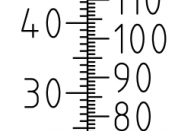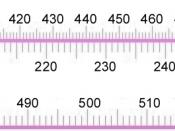The purpose of the first part of the lab, "Weather," is to teach the student about different temperature scales such as Celsius and Fahrenheit. Using these temperatures the student will then learn how to calculate dew point and relative humidity.
To explain how air heats and cools, it is essential to know that the air is made up of many molecules of various gases. All these molecules move around very fast and as heat is added they move faster and when the heat is removed they move slower. The movement of these molecules determines the temperature of the air by averaging the kinetic energy of the molecules. A thermometer is used in this experiment to determine temperature, although there are several other instruments that could have been used.
The Mercury Thermometer determines temperature because when heated, mercury expands more than glass. The Celsius scale equals the boiling and freezing point of water, and the Fahrenheit scale is based on mathematical scales of the Celsius scale:
100ð C = 212ð F, and 0ð C = 32ð F
Using these temperature scales, the following equations can be used to convert between the two scales:
Tc = 5/9(TF - 32) Converts from Celsuis to Fahrenheit
TF = 9/5(TC + 32) Converts from Fahrenheit to Celsius
After finding temperature, one can also find the relative humidity, which is the measure of how much water vapor is in the air compared to the maximum amount of water vapor that can be held at a certain temperature.
An experiment to test the relative humidity of an area is to pour tap water into an aluminum container and while slowly adding ice watch for when dew forms on the outside of the container. When dew is formed, record the temperature, then remove the ice and record...


